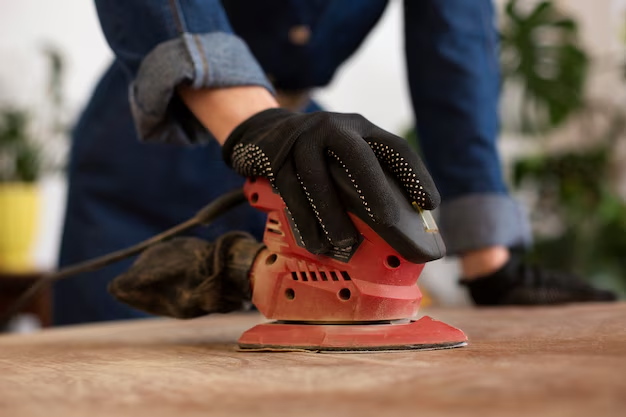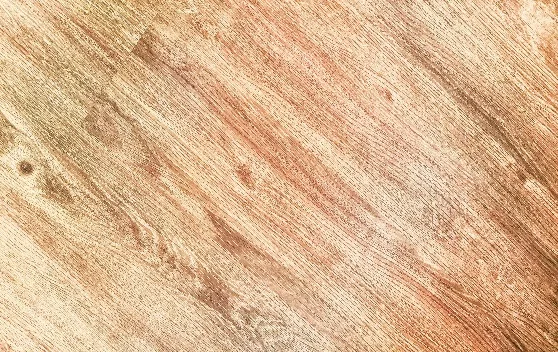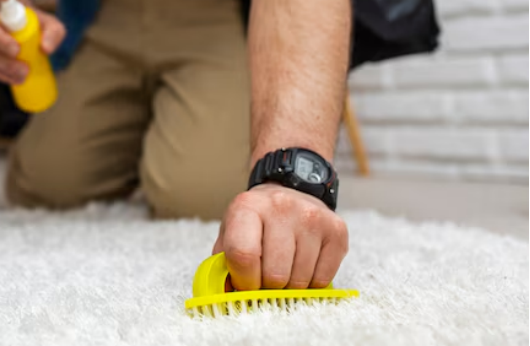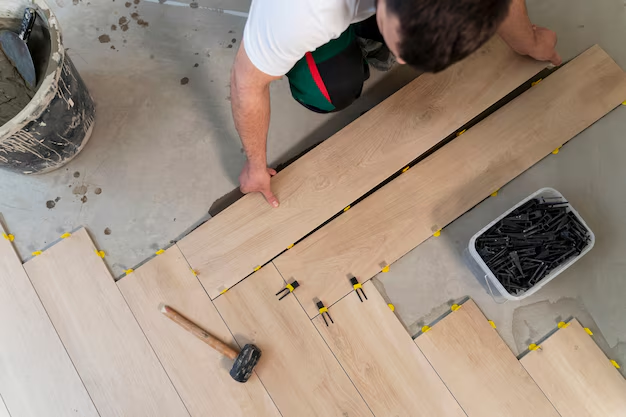Flooring is one of the most visible elements in any home or business and greatly influences both appearance and functionality. Over time, even the best floors may suffer from scratches, stains, and other issues due to everyday use, accidents, or improper maintenance. Addressing these problems promptly not only preserves the appearance of your floors but can also extend their lifespan and protect your investment.
Let’s get started by examining common flooring issues and the methods you can use to resolve them.
Understanding Common Flooring Problems
Flooring problems can vary widely depending on the material used and the level of traffic in a space. Whether you have hardwood, vinyl plank, or carpet, issues such as scratches, stains, dents, and water damage are frequent complaints among property owners. Proper maintenance and prompt repair of minor damage can extend the useful life of flooring.
Causes and Effects
Scratches on hardwood floors, for instance, are often caused by moving furniture, pet claws, or even high-heeled shoes. These superficial marks, if left unattended, may become more pronounced over time. Vinyl plank floors, including luxury vinyl plank flooring, are more resistant to water but may still suffer from scuffs or spills that cause staining. In carpeted areas, stains and indentations are common, especially in high-traffic areas like hallways and living rooms.
Each type of flooring has its specific set of problems:
- Hardwood Floors: Susceptible to scratches, dents, and water damage. Over time, the finish may wear off, exposing the wood to further harm.
- Vinyl Plank Flooring: Although water-resistant, spills and stains can discolor the surface. Scratches may also appear with heavy use.
- Carpet: Prone to staining, wear, and matting, particularly in areas with heavy foot traffic. Even minor damage can affect the overall look and comfort of a room.
Understanding the source of the problem is the first step in choosing the best repair method. Regular maintenance and proper cleaning routines can prevent many issues, but accidents do happen. With the right techniques and materials, many common flooring problems can be repaired at home without the need for a full replacement.
Fixing Scratches on Hardwood Floors
Hardwood floors are prized for their natural beauty and long life, but even the sturdiest wood can show signs of wear. Small scratches and scuffs, while often cosmetic, can detract from the overall look of the floor. Fortunately, there are several practical solutions to address these imperfections.
Step-by-Step Repair Process
- Assess the Damage:
Begin by determining the depth of the scratch. Light surface scratches can often be addressed with simple touch-up products, while deeper gouges may require sanding and refinishing. - Clean the Area:
Before starting any repair, thoroughly clean the scratched area. Use a damp cloth to remove dust and debris. Allow the floor to dry completely to prevent moisture from interfering with the repair process. - Use a Wood Repair Kit:
For minor scratches, wood repair markers or fillers are available in various shades to match your floor. These products help conceal scratches and blend with the existing finish. Follow the manufacturer’s instructions carefully. - Sand & Finish Wood Floors:
For deeper scratches or gouges, lightly sanding the damaged area with fine-grit sandpaper may be necessary. After sanding, apply a matching wood finish to restore the floor’s appearance. If the scratch is extensive, consider refinishing the affected section.
Many homeowners choose to consult with hardwood flooring experts to perform these tasks professionally. Their experience with professional hardwood flooring can make a significant difference in achieving a seamless repair. - Apply a Protective Coat:
Once the repair is complete, a clear protective coat can help prevent future damage. This added layer guards against further scratches and makes routine cleaning easier.
When to Call in Professionals
If the scratches cover a large area or if you are uncertain about the repair process, it may be wise to consult with hardwood flooring contractors or hardwood flooring solutions specialists. Their expertise ensures that the repair work is done correctly, preserving the beauty and durability of your floors.

Repairing Stains on Vinyl Plank Flooring
Vinyl plank flooring has become a popular alternative to traditional hardwood, especially with the rise of SPC floors (Stone Plastic Core Waterproof Vinyl Plank) and luxury vinyl plank flooring. While these floors offer excellent water resistance and durability, stains and minor scuffs can still occur over time.
Step-by-Step Stain Removal Process
- Identify the Type of Stain:
The repair method depends on the nature of the stain. Organic stains (such as food or beverage spills) may require different cleaning agents than oil-based or chemical stains. - Clean the Surface:
Use a mild detergent mixed with water to clean the affected area. Gently scrub with a soft cloth or a non-abrasive sponge. Avoid harsh chemicals that might damage the surface of your vinyl plank flooring. - Apply a Vinyl Plank Flooring Cleaner:
Specialized cleaning products for vinyl floors are available and can effectively remove stubborn stains. Always follow the instructions provided on the cleaner’s label. - Rinse and Dry:
After cleaning, rinse the area with clean water and dry it thoroughly. This step is important to avoid any residue that could attract more dirt or cause further staining. - Use a Repair Kit for Deep Stains:
For more persistent stains or minor surface damage, consider using a repair kit designed for vinyl plank flooring solutions. These kits often come with a colored filler that can blend in with your floor, concealing the stain.
When to Seek Professional Help
If the stain is extensive or if your floor has been damaged beyond a simple cleaning, it might be necessary to consult with professionals. Companies specializing in vinyl plank flooring can offer repair services. They have the expertise to restore your floor’s appearance without the need for a complete replacement.
For example, if you notice that stains are recurring or if the finish appears worn, professional services such as vinyl plank flooring services can perform a more thorough repair or recommend a refinishing treatment.

Addressing Carpet Damage: Stains, Tears, and Indentations
Carpet is a popular choice for many due to its comfort and warmth, but it is not immune to damage. Common issues include stains, tears, and indentations from heavy furniture or high foot traffic. Addressing these problems promptly can maintain the appearance and prolong the life of your carpet.
Step-by-Step Carpet Repair Process
- Assess the Damage:
Determine whether the issue is a stain, a tear, or an indentation. The method of repair will vary accordingly. - Treating Stains:
- Blot, Don’t Rub: When a spill occurs, quickly blot the area with a clean cloth to absorb as much liquid as possible. Rubbing may spread the stain.
- Use a Carpet Cleaner: Apply a carpet cleaning solution suitable for your carpet type. Gently work it into the stained area using a soft brush or sponge.
- Rinse and Blot Again: After the cleaning solution has been absorbed, rinse the area with a small amount of water and blot dry. Repeat as necessary until the stain fades.
- Repairing Tears:
For small tears or rips, carpet repair kits are available that include adhesive and patches designed to blend with your carpet. Follow the instructions on the kit to apply a patch over the tear, pressing firmly to secure it. - Fixing Indentations:
Indentations caused by heavy furniture can often be minimized by placing ice cubes over the affected area. As the ice melts, the carpet fibers tend to return to their original position. Gently brush the area afterward to restore the carpet’s texture.
When Professional Carpet Installation and Repair Are Necessary
For larger areas of damage or persistent issues, it may be best to rely on experts who specialize in carpet installation and repair. Their expertise can ensure that the repair work is performed seamlessly. Moreover, if a section of carpet is too damaged, carpet replacement installation might be required to maintain the overall look of your space.

Preventing Future Flooring Problems
While repairing existing damage is important, taking proactive steps to prevent future issues can save time and money. Implementing a regular maintenance routine is the best way to keep your floors in top condition.
General Maintenance Tips
- Regular Cleaning:
Frequent cleaning helps prevent the buildup of dirt and debris that can scratch or stain flooring surfaces. Use appropriate cleaning products for each flooring type whether it’s hardwood, vinyl plank, or carpet. - Use Protective Measures:
- Furniture Pads: Attach pads under furniture legs to avoid scratches on hardwood floors.
- Rugs and Mats: Place rugs in high-traffic areas and mats at entryways to reduce the amount of dirt tracked onto the floors.
- Proper Footwear: Encourage family members and guests to remove shoes before walking on your floors, especially if you have hardwood or vinyl plank surfaces.
- Scheduled Maintenance:
Arrange for professional maintenance periodically. For hardwood floors, this might include sanding and refinishing to maintain appearance retention. For vinyl plank and tile floors, professionals can perform deep cleaning and minor repairs to keep the surfaces looking fresh.
Homeowners and property managers can benefit from consulting with local hardwood flooring installers or vinyl flooring experts for routine checks and maintenance.
Specialized Preventative Care
- For Hardwood Floors:
In addition to daily care, consider using cleaning products specifically designed for wood. Regularly inspect your floors for any signs of damage, and address issues as soon as they arise to prevent further deterioration. - For Vinyl Plank Flooring:
Use cleaners designed for vinyl tile flooring services or vinyl plank flooring solutions to avoid damaging the protective finish. Avoid abrasive tools that may scratch the surface. - For Carpet:
Regular vacuuming and periodic professional cleaning by carpet installation services or carpet replacement installation specialists can significantly extend the life of your carpet. Promptly attend to spills and stains to prevent permanent damage.

Choose the Best Repair Approach for Your Flooring
Maintaining the appearance and functionality of your floors involves understanding common issues and applying the right repair methods. Whether you have hardwood, vinyl plank, or carpet, minor scratches, stains, and damage can often be fixed with a few careful steps. By taking action early and adopting a proactive maintenance routine, you can preserve your flooring’s look and prolong its lifespan.
For expert assistance with repairs or routine maintenance, reach out to Floorcraft today. Our team of local hardwood flooring installers, hardwood flooring experts, and specialists in residential vinyl plank installation, commercial vinyl plank flooring, and much more are ready to offer personalized recommendations. Let our mobile showroom bring flooring samples directly to you, providing the practical solutions you need. Call now to speak with Marty and schedule your consultation and free estimate.